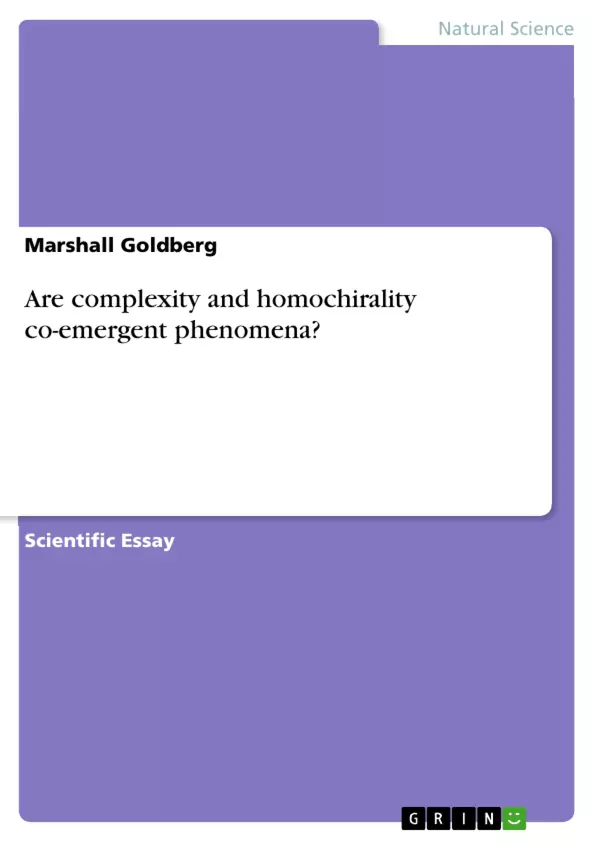How did life begin? Why are amino acids left-handed (homochiral) in living organisms? This paper suggests that these questions can be approached by analysing computational constraints in complex dynamical systems (chemical or not) that are not in equilibrium. I will propose a model based on the behavior of dynamic billiards on billiard tables shaped like asymmetry graphs (A-graphs) constructed from Wolfram random cellular automaton #30 and Wolfram complex cellular automaton #110. The model entails an abstract geometrical illustration of the co-emergence of left-homochirality and complexity.
It is proposed that complexity and homochirality are co-emergent phenomena based on the formulation asymmetriy and entropy leads to complexity.
Consequently, life may not necessarily depend on carbon-water chemistry on worlds in the 'Goldilocks' zone.
Inhaltsverzeichnis (Table of Contents)
- ARE COMPLEXITY AND HOMOCHIRALITY CO-EMERGENT PHENOMENA?
- Introduction
- A Brief History
- Dynamical Billiards on Asymmetry Graphs
- Asymmetry Graphs #110 and #30
- Discussion
Zielsetzung und Themenschwerpunkte (Objectives and Key Themes)
This paper explores the co-emergence of complexity and homochirality, specifically addressing the question of why amino acids in living organisms are predominantly left-handed. It proposes a novel approach using computational constraints in non-equilibrium dynamic systems, drawing an analogy to dynamic billiards on asymmetry graphs based on Wolfram cellular automata. This analysis aims to provide a theoretical framework for understanding the origins of homochirality in the context of complex systems.
- The origins of homochirality in living organisms.
- The relationship between complexity and homochirality.
- The application of computational constraints and dynamic billiards on asymmetry graphs to study non-equilibrium systems.
- The role of Wolfram cellular automata in understanding complexity and symmetry breaking.
- The significance of far-from-equilibrium thermodynamic systems in the development of homochirality.
Zusammenfassung der Kapitel (Chapter Summaries)
- Introduction: Introduces the question of the origin of life and homochirality, and proposes the use of dynamic billiards on asymmetry graphs as a tool for analyzing non-equilibrium complex systems.
- A Brief History: Reviews historical attempts to explain the origin of homochirality, including Miller's experiment and Frank's amplification theory, highlighting their limitations.
- Dynamical Billiards on Asymmetry Graphs: Discusses the theoretical framework of geometric chemistry, based on dynamic billiards on asymmetry graphs derived from Wolfram cellular automata. It emphasizes the connection between complexity and symmetry breaking in non-equilibrium systems.
- Asymmetry Graphs #110 and #30: Explains the characteristics and differences between asymmetry graphs #110 and #30, linking them to complex and random networks, respectively. It highlights the significance of information flow in these systems.
Schlüsselwörter (Keywords)
This paper focuses on the intersection of complexity, homochirality, non-equilibrium thermodynamics, dynamic billiards, Wolfram cellular automata, asymmetry graphs, information flow, and symmetry breaking. It explores the application of these concepts to understand the origins of life and the emergence of homochirality in living organisms.
- Citation du texte
- Marshall Goldberg (Auteur), 2019, Are complexity and homochirality co-emergent phenomena?, Munich, GRIN Verlag, https://www.grin.com/document/458984



